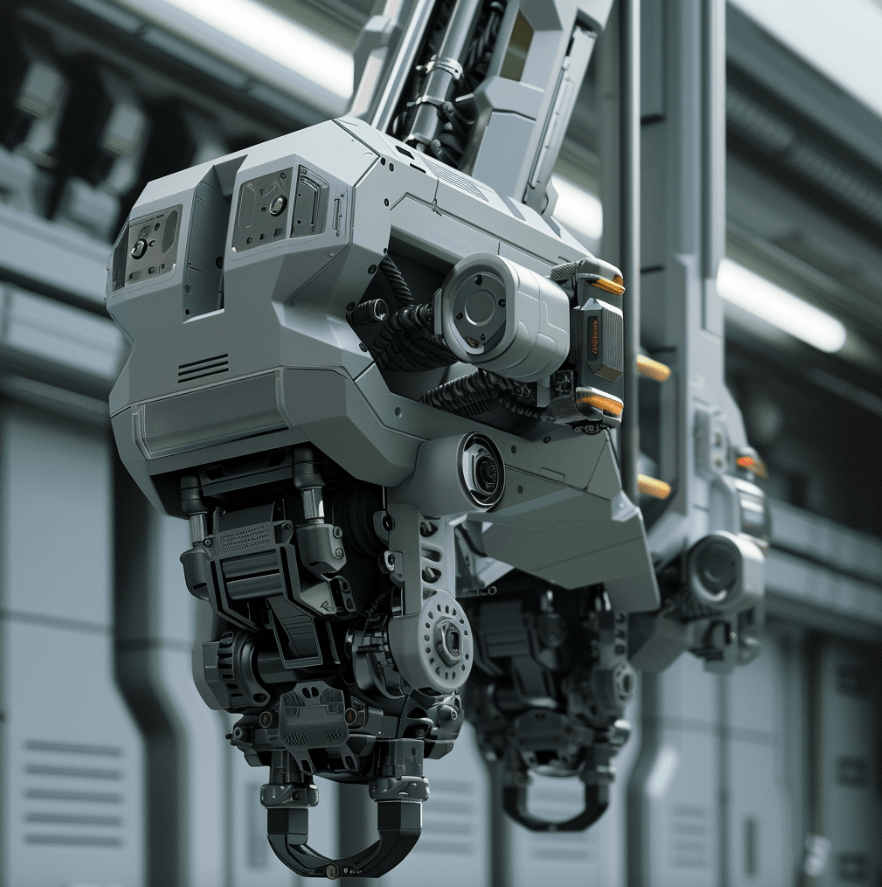Robot showdown: Gantry bots vs articulated robot arms
When it comes to the realm of industrial robots, gantry bots and articulated arms are two of the most common types.
But how do they stack up against each other in a side-by-side comparison?
Let’s find out:
- How strong are they? If you need to move heavy or bulky items, gantry robots take the win. Their bridge-like structure gives them an inherently stable design to lift tons. Articulated arms typically max out at around 500 kilograms, though some can lift up to 2 tons, like the FANUC m2000iA.
- How about the work area? Gantry robots win again when it comes to range of motion and coverage area. Their linear tracks allow them to operate over a wide, open space.
Some gantry bots have a work area of 100 square meters or more. Articulated arms are more compact, with a limited, circular work envelope. They’re better suited to smaller, confined areas where a gantry robot wouldn’t fit.
- What about precision? When you need high precision, especially for extremely repetitive pick and place tasks, articulated arms are usually the better choice. Their multiple rotary joints are designed for skillful movement and can achieve very tight tolerances.
Gantry robots are less dexterous and more prone to vibration, so they struggle with highly precise or delicate operations.
- And the cost? If budget is a concern (and when isn’t it?), articulated arms have the price advantage. They are often tens of thousands of dollars cheaper than a comparable gantry robot.
However, gantry robots can potentially reduce overall automation costs due to their high throughput and minimal downtime.
|
Feature
|
Gantry Robots
|
Articulated Robot Arms
|
|
Strength
|
Can lift tons, ideal for heavy/bulky items.
|
Max 500 kg, some models up to 2 tons.
|
|
Work Area
|
Large, over 100 sqm, wide range of motion.
|
Limited, circular envelope, suits smaller spaces.
|
|
Precision
|
Less dexterous, prone to vibration.
|
High precision, multiple rotary joints for fine control.
|
|
Cost
|
Higher initial cost, but may lower overall automation costs.
|
Less expensive, but higher operational costs possible.
|
|
Flexibility
|
Fixed to linear tracks, less versatile in positioning.
|
Highly flexible, can reach difficult angles and spaces.
|
|
Speed
|
Generally faster in straight-line movements.
|
Slower, but more agile with complex tasks.
|
|
Maintenance
|
Simple structure, easier to maintain.
|
Complex joints may require more frequent maintenance.
|
|
Application
|
Best for large-scale, repetitive tasks over wide areas.
|
Ideal for detailed, precise tasks in confined spaces.
|
Summing up
Gantry robots may seem intimidating at first, but as you’ve probably seen, they’re simple, accessible machines.
Whether you need fast palletizing or precise machine tending, gantry bots are excellent choices, especially if your industrial space tends to be on the larger side.
So, now that you're a gantry pro, you can assess if one of these bad boys is the right fit for you.
And if it is, you'll be well on your way to using their speed, precision, and all-around brute strength to get extreme throughput, productivity, and profit gains!
Next steps
Looking for a premium articulated robot arm instead? Standard Bots' RO1, at the forefront of Six-Axis articulated robot arm innovation, suits both emerging startups and industry giants perfectly.
- High-tech at a fraction of the cost: RO1 dazzles with its cutting-edge features without the hefty price tag. Priced significantly lower than its competitors, it brings sophisticated automation within the reach of businesses of all sizes — at half the cost.
- Redefining industry benchmarks: With its hefty 18 kg payload and unmatched speed and accuracy, RO1 sets a new bar for what's possible, thanks to its self-learning technology that rivals the intelligence of powerful AIs like GPT-4.
- Built-in safety measures: RO1 prioritizes a secure working environment with its comprehensive safety features, guaranteeing that collaborative operations with your human employees are both safe and consistent across various settings.
- Evolving through learning: Standing at the apex of automation advancement, RO1 showcases superior adaptability and self-improvement capabilities, learning dynamically from every interaction to refine its operational efficacy continually.
Let our expert team guide you in integrating RO1's revolutionary features smoothly into your business operations.


